Five Tips to Improve Your Self-Defense Training Sessions
This article explores effective strategies to enhance your self-defense training, ensuring you get the most out of each session while building confidence and skills for real-life situations.
Establishing specific, measurable goals for your training can provide direction and motivation. Think of your goals as a roadmap; without them, you might find yourself wandering aimlessly. This clarity helps you focus on what you want to achieve in each session, making progress more tangible. For instance, instead of saying, "I want to get better at self-defense," try setting a goal like, "I will master three new techniques by the end of the month." This way, you have a clear target to hit, and each session becomes a stepping stone toward that achievement.
Practicing self-defense techniques in realistic scenarios prepares you for actual situations. Imagine you’re in a movie scene, and you need to react quickly to an unexpected attack. Simulating various attack scenarios enhances your reflexes and decision-making skills, ensuring you react effectively under pressure. Consider setting up drills that mimic real-life situations, such as being approached from behind or dealing with multiple attackers. This immersive experience can make all the difference when it truly counts.
Mastering the fundamental techniques is crucial for building a strong self-defense foundation. Regularly practicing basic moves reinforces muscle memory and increases your overall effectiveness during self-defense encounters. Think of it like learning to ride a bike; once you get the basics down, you can tackle more complex maneuvers. Dedicate time in each session to revisit and refine these essential techniques, ensuring they become second nature to you.
Maintaining physical fitness is essential for effective self-defense. Just like a car needs fuel to run, your body needs strength, endurance, and flexibility to perform at its best. Incorporating a variety of exercises into your routine can enhance your ability to execute techniques and escape from dangerous situations. For example, consider adding cardio workouts, strength training, and flexibility exercises to your weekly regimen. This holistic approach not only prepares you physically but also boosts your confidence, knowing you’re fit and ready to handle any challenge.
Working with qualified instructors can significantly improve your training experience. They provide personalized feedback, correct your form, and introduce advanced techniques tailored to your skill level, accelerating your progress. Think of them as your personal trainers in the world of self-defense—without their expertise, you might miss out on essential nuances that could make all the difference. Don’t hesitate to ask questions and seek their advice; after all, their goal is to help you succeed.
Training with partners allows you to apply techniques in a dynamic environment. Partner drills enhance your timing, distance management, and adaptability, making your self-defense skills more versatile and effective. It’s like playing a sport; the more you practice with others, the better you become. Find a training buddy who shares your dedication, and challenge each other to improve. This not only makes training more enjoyable but also simulates the unpredictability of real-life encounters.
Keeping a training journal helps track your progress and identify areas for improvement. Documenting your achievements and challenges provides motivation and a clearer picture of your development over time. Imagine flipping through the pages of your journal and seeing how far you’ve come—it's a powerful reminder of your hard work. Whether it’s noting down new techniques learned or reflecting on a particularly tough session, this practice can keep your momentum going.
Mental preparedness is as crucial as physical training. Developing a strong mindset through visualization and stress management techniques can enhance your confidence and performance during self-defense situations. Picture yourself successfully defending against an attack, feeling the adrenaline and confidence surge through you. Techniques like meditation or breathing exercises can also help calm your mind, allowing you to focus better during training and in real-life situations.
Consistent review of techniques ensures retention and mastery. Periodically revisiting and refining your skills helps prevent stagnation and keeps your training sessions fresh and engaging. Think of it like revisiting your favorite book; each time you read it, you discover something new. Schedule regular review sessions where you can practice techniques you’ve previously learned, ensuring they stay sharp and ready for action.
Q: How often should I practice self-defense?
A: Ideally, you should practice at least 2-3 times a week to build and maintain your skills effectively.
Q: Can I practice self-defense alone?
A: Yes, many techniques can be practiced solo, but training with a partner is beneficial for applying techniques in real-time scenarios.
Q: What should I do if I feel overwhelmed during training?
A: Take a moment to breathe and refocus. Remember, it’s perfectly normal to feel challenged; that’s how growth happens!
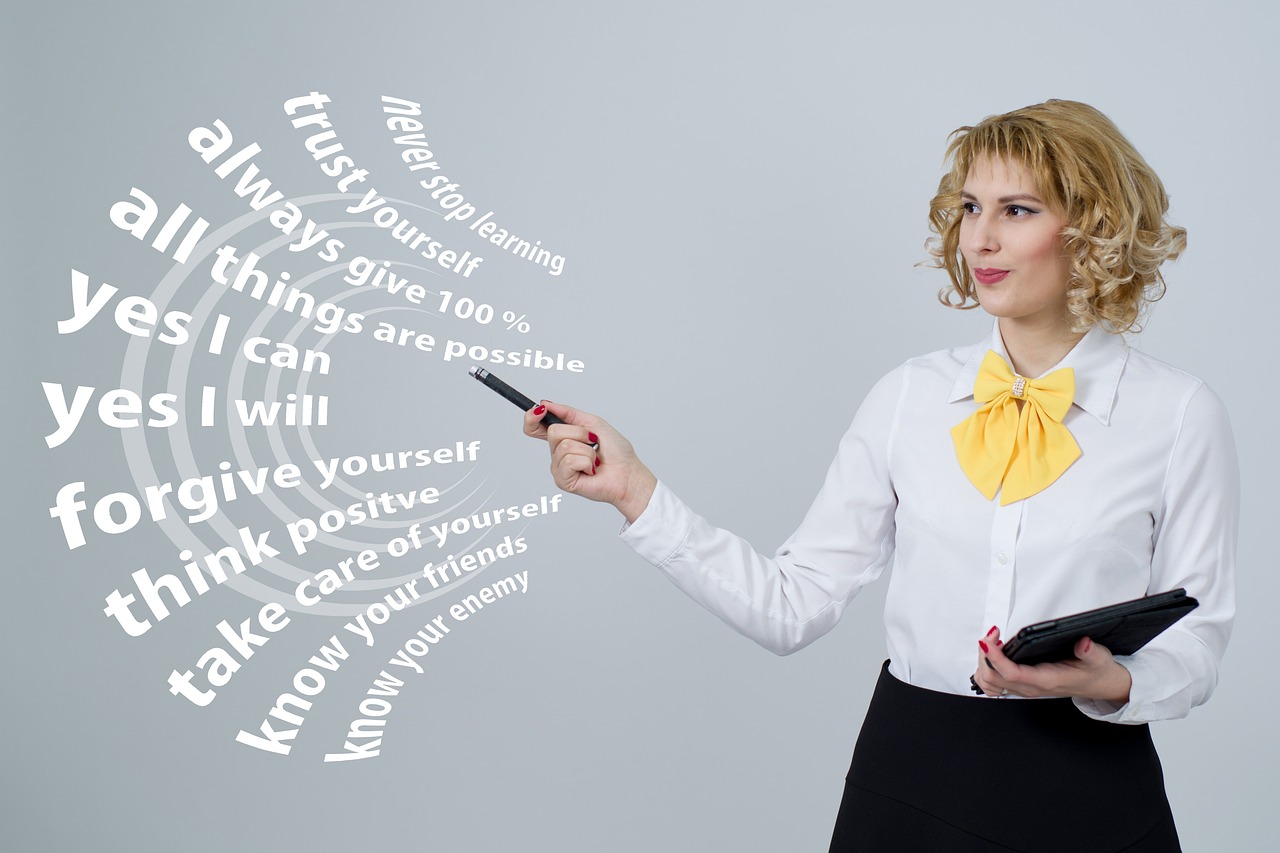
Set Clear Goals
Establishing specific, measurable goals for your self-defense training is like having a roadmap for a long journey. Without a clear destination, it’s easy to get lost or feel aimless. Think about it: when you set a goal, you create a sense of purpose that not only motivates you but also provides direction for your training sessions. Instead of wandering through techniques haphazardly, you can focus on what you want to achieve, making your progress more tangible and rewarding.
To truly harness the power of goal-setting, start by identifying what you want from your training. Are you looking to improve your physical fitness, learn specific techniques, or boost your confidence in real-life situations? Once you have a clear vision, break it down into smaller, achievable objectives. For example, you might set a goal to master a particular technique by the end of the month or to increase your stamina to last longer in training sessions.
It can be helpful to use the SMART criteria when setting your goals. This means ensuring your goals are:
- Specific: Clearly define what you want to achieve.
- Measurable: Quantify your progress to keep yourself accountable.
- Achievable: Set realistic goals that challenge you but are still attainable.
- Relevant: Ensure your goals align with your overall self-defense objectives.
- Time-bound: Set a deadline to create urgency and focus.
For instance, instead of saying, "I want to get better at self-defense," a SMART goal would be, "I want to practice my striking techniques for 30 minutes, three times a week for the next month." This way, you have a clear target to aim for, and you can easily track your progress along the way.
Remember, setting goals is not a one-time activity. As you progress and develop your skills, don’t hesitate to revisit and adjust your goals. This flexibility allows you to stay engaged and motivated, keeping your training sessions fresh and challenging. So, grab a notebook or open a notes app, and start jotting down your goals today!

Incorporate Realistic Scenarios
This article explores effective strategies to enhance your self-defense training, ensuring you get the most out of each session while building confidence and skills for real-life situations.
Establishing specific, measurable goals for your training can provide direction and motivation. This clarity helps you focus on what you want to achieve in each session, making progress more tangible.
When it comes to self-defense training, simply practicing techniques in isolation isn't enough. You need to that mimic real-life situations. Think about it: if you were faced with an unexpected attack, would you remember the moves you practiced in a sterile environment? Probably not! That's why simulating various attack scenarios is essential. By doing this, you can enhance your reflexes and decision-making skills, ensuring you react effectively under pressure.
Imagine you’re walking down the street, and suddenly someone approaches you aggressively. If you've trained in a controlled environment where you can practice against different types of attacks—like grabs, pushes, or even weapons—you'll be more prepared to handle the situation. Here are some scenarios you might want to consider incorporating into your training:
- Physical Confrontation: Practice defending against grabs or pushes.
- Multiple Attackers: Learn to manage situations where you may face more than one person.
- Weapon Defense: Simulate attacks involving knives or other weapons to understand how to disarm an opponent.
- Surprise Attacks: Train with a partner who can initiate an attack without warning, forcing you to react quickly.
Additionally, consider varying the environments where you practice. Training in different settings—like a park, a parking lot, or even indoors—can help you adapt to various circumstances. This adaptability is crucial because self-defense situations can occur anywhere and at any time.
Moreover, you can enhance the realism of your training by incorporating factors like time constraints or stressors. For instance, try setting a timer and see how quickly you can respond to an attack. Or, practice while listening to loud music or in a crowded space to simulate distractions. The more you can mimic real-life conditions, the better prepared you’ll be when it truly matters.
Mastering the fundamental techniques is crucial for building a strong self-defense foundation. Regularly practicing basic moves reinforces muscle memory and increases your overall effectiveness during self-defense encounters.
Maintaining physical fitness is essential for effective self-defense. Incorporating strength, endurance, and flexibility training into your routine enhances your ability to execute techniques and escape from dangerous situations.
Working with qualified instructors can significantly improve your training experience. They provide personalized feedback, correct your form, and introduce advanced techniques tailored to your skill level, accelerating your progress.
Training with partners allows you to apply techniques in a dynamic environment. Partner drills enhance your timing, distance management, and adaptability, making your self-defense skills more versatile and effective.
Keeping a training journal helps track your progress and identify areas for improvement. Documenting your achievements and challenges provides motivation and a clearer picture of your development over time.
Mental preparedness is as crucial as physical training. Developing a strong mindset through visualization and stress management techniques can enhance your confidence and performance during self-defense situations.
Consistent review of techniques ensures retention and mastery. Periodically revisiting and refining your skills helps prevent stagnation and keeps your training sessions fresh and engaging.
Q: How often should I practice self-defense techniques?
A: Aim for at least two to three times a week to maintain skills and build muscle memory.
Q: Can I practice self-defense alone?
A: While partner training is beneficial, you can practice solo techniques and conditioning exercises to improve your skills.
Q: What is the best self-defense style for beginners?
A: Styles like Krav Maga or Brazilian Jiu-Jitsu are often recommended for their practical applications and focus on real-life scenarios.
Q: How do I find a good self-defense class?
A: Look for classes with qualified instructors, positive reviews, and a focus on realistic training.
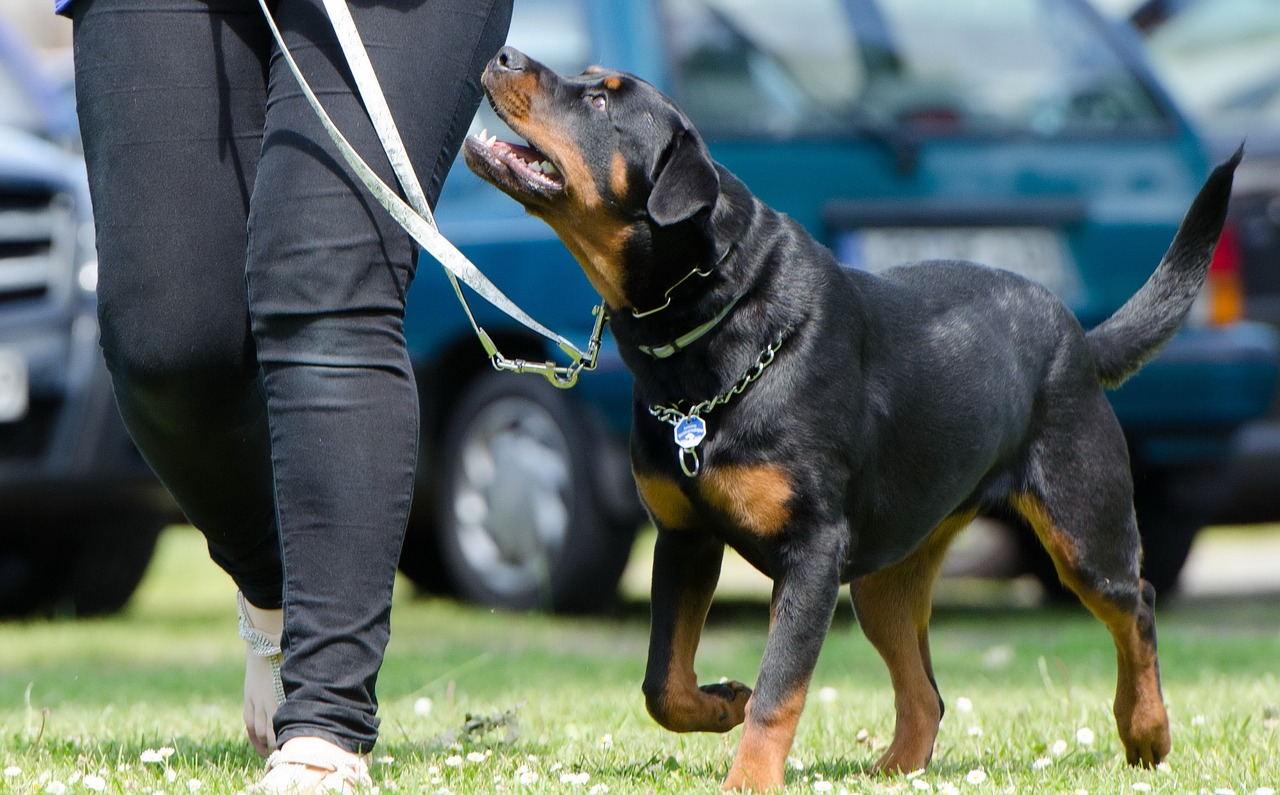
Focus on Fundamentals
When it comes to self-defense, the fundamentals are your best friends. Think of them as the foundation of a house; without a solid base, everything else is at risk. Mastering the basic techniques is essential for building a strong self-defense foundation that can withstand the tests of real-life scenarios. Whether you're learning to throw a punch, execute a kick, or perform a defensive maneuver, focusing on these core skills will pay off in the long run.
One of the most effective ways to enhance your understanding of these fundamentals is through consistent practice. Just like learning to play a musical instrument, repetition is key. You wouldn’t expect to master the guitar without strumming the same chords over and over again, right? The same principle applies here. By regularly practicing basic moves, you reinforce your muscle memory, making it easier to execute techniques smoothly and instinctively when it counts.
Moreover, it’s important to understand the mechanics behind each move. Knowing why a technique works can greatly enhance your ability to apply it effectively. For example, when you learn how to escape a wrist grab, understanding the physics of leverage and body movement can make that escape more successful. This deeper comprehension can also help you adapt techniques to different situations, making your self-defense skills more versatile.
Additionally, consider integrating partner drills into your practice sessions. Training with a partner allows you to apply these fundamental techniques in a dynamic environment, which is crucial for developing your timing and distance management. You might find that what feels easy in solo practice becomes challenging when you’re reacting to a moving partner. This is where the real learning happens!
To keep your training engaging and to ensure you’re not just going through the motions, it’s beneficial to set specific objectives for each practice session. For example, you might focus on improving your jab technique one day and work on your footwork the next. This focused approach not only keeps your training fresh but also allows you to track your progress over time.
In summary, focusing on the fundamentals of self-defense is not just about repetition; it’s about understanding, adapting, and applying what you’ve learned in various situations. So, the next time you step onto the training mat, remember that these basic techniques are your greatest allies. They provide the strength and confidence you need to handle real-life confrontations with grace and effectiveness.
- What are the fundamental techniques to focus on in self-defense?
Fundamental techniques include basic strikes (like punches and kicks), escapes from holds, and defensive moves. Mastering these will give you a solid foundation.
- How often should I practice the fundamentals?
It’s best to practice them regularly, ideally several times a week, to reinforce muscle memory and ensure proficiency.
- Can I practice self-defense techniques at home?
Absolutely! Many fundamental techniques can be practiced solo or with a partner at home, making it easy to integrate training into your daily routine.
- Is it necessary to train with a partner?
While solo practice is important, training with a partner is crucial for applying techniques in a realistic setting and enhancing your adaptability.

Stay Physically Fit
When it comes to self-defense, being physically fit is not just a bonus; it's a **necessity**. Imagine trying to escape from a dangerous situation while feeling winded or weak. It’s like trying to run a marathon in flip-flops—you're just not going to get very far! To effectively execute self-defense techniques, you need to have a solid foundation of strength, endurance, and flexibility. These three elements work together to ensure that your body can respond quickly and effectively when it matters most.
Let’s break down why each of these components is essential:
- Strength: Building muscle strength enhances your ability to perform powerful strikes and holds. Think of it as the engine of your body; the more powerful the engine, the better your performance. Incorporating weight training or resistance exercises into your routine can significantly boost your strength.
- Endurance: Self-defense situations can be unpredictable and may require sustained effort. Having good cardiovascular fitness means you can maintain your energy levels when the adrenaline kicks in. Activities like running, swimming, or cycling can help improve your stamina.
- Flexibility: Being flexible can prevent injuries and enhance your range of motion, allowing you to escape holds and perform techniques more effectively. Regular stretching or yoga can aid in improving your flexibility.
To give you a clearer picture of how to integrate these elements into your training, here’s a simple weekly fitness plan that you can follow:
| Day | Focus Area | Activity |
|---|---|---|
| Monday | Strength | Weight Training (Full Body) |
| Tuesday | Endurance | 30-Minute Run or Cycling |
| Wednesday | Flexibility | Yoga or Stretching Routine |
| Thursday | Strength | Bodyweight Exercises (Push-ups, Squats) |
| Friday | Endurance | Interval Training (Sprints) |
| Saturday | Flexibility | Dynamic Stretching and Mobility Work |
| Sunday | Rest | Active Recovery (Light Walk or Swim) |
By sticking to a routine that incorporates these elements, you’ll not only improve your physical fitness but also enhance your self-defense capabilities. Remember, it’s all about building a body that can react and adapt to whatever challenges come your way. So, lace up those sneakers, hit the gym, and start training like your safety depends on it—because it does!
Q: How often should I train to stay physically fit for self-defense?
A: Aim for at least 3-5 days a week, mixing strength, endurance, and flexibility workouts to create a balanced routine.
Q: Can I improve my self-defense skills without being in peak physical condition?
A: While you can learn techniques, being in good shape will significantly enhance your effectiveness in applying those techniques during a real-life situation.
Q: What if I have injuries or physical limitations?
A: Always consult with a healthcare professional before starting any new fitness program, and consider working with a trainer who can tailor exercises to your needs.
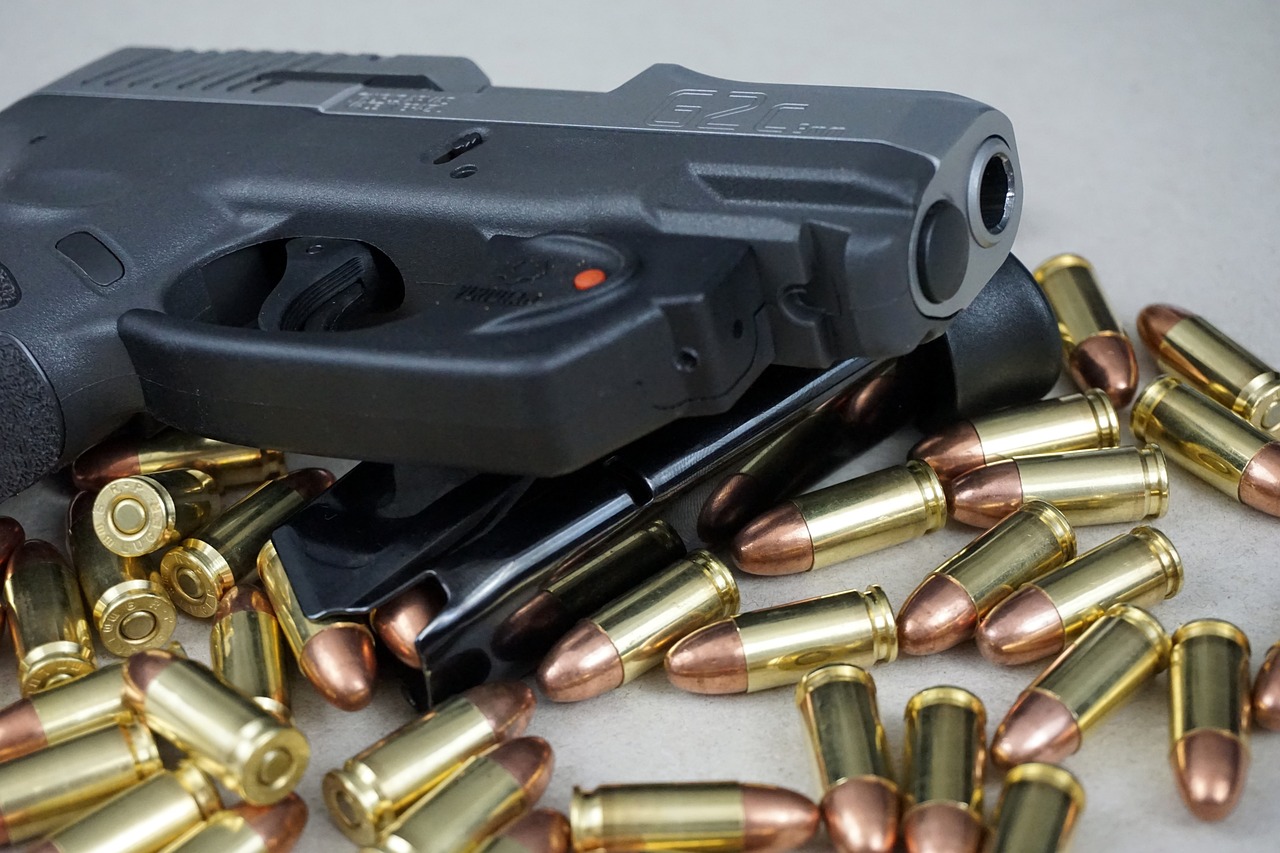
Seek Professional Guidance
This article explores effective strategies to enhance your self-defense training, ensuring you get the most out of each session while building confidence and skills for real-life situations.
Establishing specific, measurable goals for your training can provide direction and motivation. This clarity helps you focus on what you want to achieve in each session, making progress more tangible.
Practicing self-defense techniques in realistic scenarios prepares you for actual situations. Simulating various attack scenarios enhances your reflexes and decision-making skills, ensuring you react effectively under pressure.
Mastering the fundamental techniques is crucial for building a strong self-defense foundation. Regularly practicing basic moves reinforces muscle memory and increases your overall effectiveness during self-defense encounters.
Maintaining physical fitness is essential for effective self-defense. Incorporating strength, endurance, and flexibility training into your routine enhances your ability to execute techniques and escape from dangerous situations.
Working with qualified instructors can significantly improve your training experience. Think of them as your personal trainers for safety; they have the expertise to guide you through the complexities of self-defense techniques. With their tailored feedback, they can correct your form, ensuring you develop proper techniques that can be crucial in a real-life scenario.
Moreover, professional instructors can introduce you to advanced techniques that align with your skill level, accelerating your progress. This personalized attention is invaluable, especially for beginners who might feel overwhelmed. They can help you identify your strengths and weaknesses, allowing you to focus on areas that need improvement.
Consider the following benefits of seeking professional guidance:
- Personalized Feedback: Instructors can provide insights that you might miss when training alone.
- Structured Learning: They can offer a curriculum that progresses logically, making your learning more efficient.
- Accountability: Regular sessions with an instructor keep you committed and motivated.
- Safety: Trained professionals can ensure that you practice techniques safely, minimizing the risk of injury.
In essence, having a professional by your side can transform your training sessions from routine practices into a comprehensive learning experience. So, if you’re serious about self-defense, investing in professional guidance is a step you won’t regret.
Training with partners allows you to apply techniques in a dynamic environment. Partner drills enhance your timing, distance management, and adaptability, making your self-defense skills more versatile and effective.
Keeping a training journal helps track your progress and identify areas for improvement. Documenting your achievements and challenges provides motivation and a clearer picture of your development over time.
Mental preparedness is as crucial as physical training. Developing a strong mindset through visualization and stress management techniques can enhance your confidence and performance during self-defense situations.
Consistent review of techniques ensures retention and mastery. Periodically revisiting and refining your skills helps prevent stagnation and keeps your training sessions fresh and engaging.
Q1: How often should I seek professional guidance in my self-defense training?
A1: It depends on your level of experience and goals. Beginners might benefit from weekly sessions, while more advanced practitioners can schedule monthly check-ins.
Q2: Can I improve my self-defense skills without a professional instructor?
A2: While self-study is possible, working with a professional can accelerate your progress and ensure you learn techniques correctly.
Q3: What should I look for in a self-defense instructor?
A3: Look for someone with experience, credentials, and a teaching style that resonates with you. Personal rapport is also essential for effective learning.
Q4: Is it necessary to practice with a partner?
A4: Yes, practicing with a partner is crucial as it simulates real-life scenarios and helps you develop your timing and adaptability.
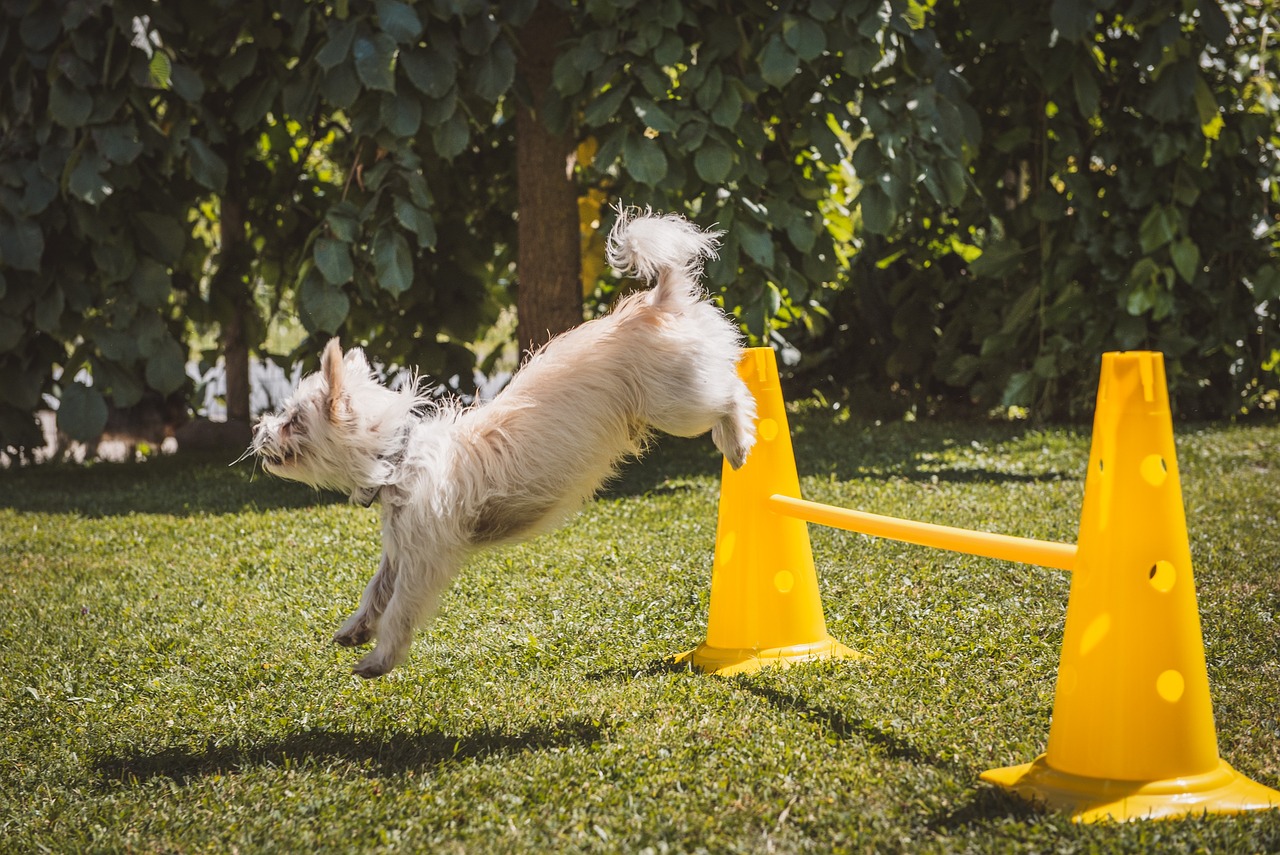
Practice with Partners
When it comes to self-defense training, practicing with partners is not just beneficial; it’s essential. Imagine trying to learn how to ride a bike without someone to help you balance. It’s the same with self-defense techniques. Training with a partner creates a dynamic environment where you can apply what you've learned in a more realistic and challenging way. You can’t just rely on solo drills; you need that interaction to truly grasp the nuances of timing, distance, and reaction.
During partner drills, you can simulate various scenarios that you might encounter in real life. For instance, one of you can act as the attacker while the other practices defensive maneuvers. This not only builds your confidence but also allows you to experience the unpredictability of a real encounter. You may find yourself surprised by how your partner reacts, which is a great way to prepare for the unexpected. Just like in a dance, where you need to feel your partner's movements to stay in sync, self-defense requires that same level of awareness and adaptability.
Moreover, practicing with a partner can help you refine your techniques. If you’re working on a specific move, your partner can provide immediate feedback. They can tell you if your stance is off or if you're not generating enough power. This kind of interaction is invaluable because it allows you to make adjustments on the fly, leading to quicker improvements. You can also take turns playing different roles, which helps you understand both the attacker’s and defender’s perspectives. This duality enhances your overall skill set and prepares you for various situations.
Don't underestimate the importance of communication while training with a partner. Discussing what you want to work on and setting mutual goals can make your sessions more productive. For example, you might agree to focus on specific techniques or scenarios that challenge both of you. This collaborative approach not only makes the training more enjoyable but also helps solidify your learning. Always remember, just like in any team sport, the synergy between you and your partner can significantly elevate your training experience.
To maximize the benefits of partner training, consider the following tips:
- Choose the Right Partner: Look for someone who is at a similar skill level or slightly above. This way, you can challenge each other without feeling overwhelmed.
- Be Respectful: Always prioritize safety. Use controlled movements, especially when practicing techniques that involve striking or grappling.
- Mix It Up: Don’t get stuck in a routine. Change partners regularly to experience different styles and techniques.
In conclusion, practicing with partners is a vital component of effective self-defense training. It not only enhances your skills but also builds your confidence and prepares you for real-life situations. So, next time you hit the training floor, grab a partner and make the most out of your session!
Q: How often should I practice with a partner?
A: Ideally, you should practice with a partner at least once a week to maintain and improve your skills.
Q: What if I don’t have a partner to train with?
A: If you lack a training partner, consider joining a self-defense class or finding a local dojo where you can meet others interested in training.
Q: Can I practice self-defense techniques alone?
A: Yes, solo drills are beneficial for mastering fundamentals, but they should be complemented by partner training for a well-rounded skill set.

Record Your Progress
Keeping track of your self-defense training progress is one of the most effective ways to ensure that you're improving and staying motivated. Think of it as your personal training diary, where every entry represents a step towards becoming more skilled and confident. By regularly documenting your achievements, challenges, and feelings about each session, you create a roadmap of your journey. This not only helps you identify areas that require more attention but also allows you to celebrate your successes, no matter how small they may seem.
One effective method for recording your progress is to maintain a training journal. In this journal, you can jot down details such as:
- The techniques you practiced
- Your feelings about the training session
- Any breakthroughs or challenges you faced
- Your physical condition and energy levels during training
Additionally, you might want to include a section for setting short-term and long-term goals. For instance, if you aim to master a specific technique or improve your reaction time, write it down! This practice not only keeps you accountable but also allows you to look back and see how far you've come over time.
To make this even more engaging, consider integrating a progress tracking table into your journal. Here’s a simple example:
| Date | Techniques Practiced | Goals Set | Notes/Reflections |
|---|---|---|---|
| 2023-10-01 | Basic punches, escapes | Improve speed | Felt good, need to work on footwork. |
| 2023-10-08 | Defensive maneuvers | Master the side kick | Struggled with balance, will practice more. |
By regularly updating this table, you can visually track your progress and see patterns in your training. It’s like having a personal coach right there with you, guiding you to stay focused and motivated. Plus, when you look back at your entries, you’ll be amazed at how much you’ve learned and grown!
Lastly, don’t underestimate the power of sharing your progress with others. Whether it’s with your training partners or instructors, discussing your journey can provide additional insights and encouragement. You might even inspire someone else to take their training seriously. So, grab that journal, start recording, and watch your self-defense skills soar!
Q: Why is it important to record my progress in self-defense training?
A: Recording your progress helps you identify areas for improvement, celebrate your successes, and stay motivated throughout your training journey.
Q: What should I include in my training journal?
A: You should include the techniques practiced, goals set, notes on your performance, and any reflections on your training sessions.
Q: How often should I update my training journal?
A: Aim to update your journal after every training session to ensure you capture your thoughts and experiences while they are fresh.
Q: Can I use digital tools to track my progress?
A: Absolutely! Many apps and digital platforms can help you track your training progress, set goals, and even connect with other practitioners.
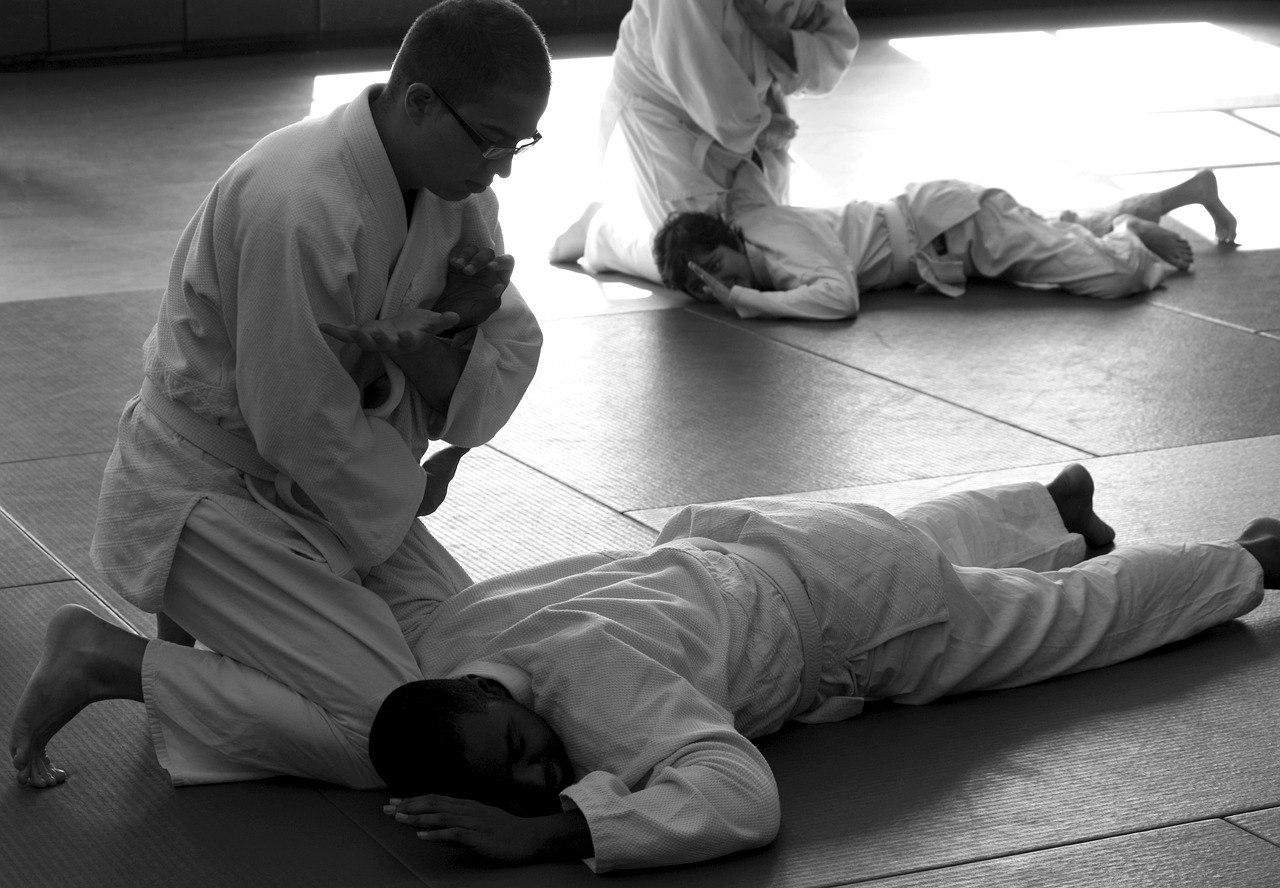
Stay Mentally Prepared
When it comes to self-defense, physical skills are undeniably important, but mental preparedness is just as crucial. Imagine you’re in a high-pressure situation; your heart is racing, and your mind is swirling with thoughts. If you haven’t mentally prepared yourself, all that training could go out the window in a split second. So, how do you build that mental fortress? Well, it starts with visualization and stress management techniques.
Visualization is like rehearsing a play in your mind. Picture yourself facing different scenarios: an attacker approaching you, a sudden confrontation, or even a situation where you need to escape. By mentally walking through these situations, you’re not just preparing your body; you’re also training your brain to react calmly and effectively. You could even create a mental script for yourself, detailing how you would respond in various situations. This technique can be a game-changer, allowing you to respond with confidence rather than panic.
Alongside visualization, practicing stress management techniques is vital. When your adrenaline spikes, your body can go into fight-or-flight mode, which might cloud your judgment. Techniques such as deep breathing, meditation, or even simple grounding exercises can help you maintain clarity when it matters most. For instance, try the 4-7-8 breathing technique: inhale for 4 seconds, hold for 7, and exhale for 8. This can help lower your heart rate and bring you back to a state of calm, making it easier to think clearly.
Moreover, it’s essential to recognize that mental preparedness is not a one-time effort. Just as you wouldn’t lift weights once and expect to be fit forever, your mind needs regular training too. Incorporate mental exercises into your routine, perhaps by setting aside a few minutes after each physical training session to visualize your techniques or reflect on your experiences. This practice not only solidifies your learning but also builds a resilient mindset, ready to tackle any situation.
Here’s a quick overview of some effective techniques to stay mentally prepared:
- Visualization: Regularly imagine yourself successfully defending against various attacks.
- Breathing Exercises: Use techniques like the 4-7-8 method to manage stress and anxiety.
- Reflection: After training, take time to think about what went well and what could be improved.
- Mindfulness: Practice being present in the moment to enhance your awareness and response time.
In conclusion, staying mentally prepared is a fundamental aspect of self-defense training that often gets overlooked. By incorporating visualization and stress management techniques into your routine, you not only enhance your physical skills but also fortify your mental resilience. The next time you step onto the training mat, remember that a strong mind is just as powerful as a strong body. After all, in the world of self-defense, it’s not just about how you fight, but how you think!

Regularly Review Techniques
This article explores effective strategies to enhance your self-defense training, ensuring you get the most out of each session while building confidence and skills for real-life situations.
Establishing specific, measurable goals for your training can provide direction and motivation. This clarity helps you focus on what you want to achieve in each session, making progress more tangible.
Practicing self-defense techniques in realistic scenarios prepares you for actual situations. Simulating various attack scenarios enhances your reflexes and decision-making skills, ensuring you react effectively under pressure.
Mastering the fundamental techniques is crucial for building a strong self-defense foundation. Regularly practicing basic moves reinforces muscle memory and increases your overall effectiveness during self-defense encounters.
Maintaining physical fitness is essential for effective self-defense. Incorporating strength, endurance, and flexibility training into your routine enhances your ability to execute techniques and escape from dangerous situations.
Working with qualified instructors can significantly improve your training experience. They provide personalized feedback, correct your form, and introduce advanced techniques tailored to your skill level, accelerating your progress.
Training with partners allows you to apply techniques in a dynamic environment. Partner drills enhance your timing, distance management, and adaptability, making your self-defense skills more versatile and effective.
Keeping a training journal helps track your progress and identify areas for improvement. Documenting your achievements and challenges provides motivation and a clearer picture of your development over time.
Mental preparedness is as crucial as physical training. Developing a strong mindset through visualization and stress management techniques can enhance your confidence and performance during self-defense situations.
Consistent review of techniques ensures retention and mastery. Just like a musician practices their scales or an athlete refines their game, you need to revisit your self-defense moves regularly. This repetition not only solidifies your understanding but also helps you discover nuances you might have missed during initial learning. Think of it as polishing a diamond; the more you work on it, the more it shines!
Here are some effective strategies for reviewing your techniques:
- Schedule Regular Review Sessions: Set aside specific times each week dedicated to reviewing techniques. This could be a short session focused on one or two moves, allowing you to concentrate on perfecting them.
- Use Visual Aids: Watching instructional videos or reviewing notes can jog your memory and provide new insights into techniques you might have overlooked.
- Practice with a Partner: Engaging in drills with a partner can help reinforce techniques in a more dynamic setting. This interaction often reveals areas that need improvement.
By integrating these strategies into your training routine, you’ll find that your skills not only improve but also become more instinctive, allowing you to react more effectively in real-life situations.
Q: How often should I review my self-defense techniques?
A: Ideally, you should review your techniques at least once a week. However, the frequency can vary based on your training schedule and personal goals.
Q: Can I review techniques on my own?
A: Yes, you can certainly review techniques on your own by watching videos, practicing in front of a mirror, or using a training dummy. However, practicing with a partner is highly beneficial for feedback and adaptability.
Q: What if I forget a technique?
A: Don’t worry! Forgetting techniques is a normal part of the learning process. Regular review and practice will help reinforce your memory over time.
Q: Should I focus on advanced techniques right away?
A: It's best to master the fundamentals first. A solid foundation will make it easier to learn and execute advanced techniques effectively.
Frequently Asked Questions
- What are some effective ways to set clear goals for my self-defense training?
Setting clear goals is all about being specific and measurable. Instead of saying "I want to get better at self-defense," try something like "I want to learn three new techniques in the next month." This gives you a clear target to aim for and helps you track your progress effectively.
- How can I incorporate realistic scenarios into my training?
To make your training more realistic, you can simulate different attack scenarios with a partner. For example, practice defending against grabs, pushes, or even surprise attacks. This not only improves your reflexes but also helps you think on your feet and react quickly in real-life situations.
- Why is focusing on fundamentals important in self-defense?
Mastering fundamental techniques is like building a house on a solid foundation. Without strong basics, your advanced techniques can crumble under pressure. Regularly practicing these basics helps reinforce muscle memory, making your reactions instinctive when it really counts.
- What kind of physical fitness should I focus on for self-defense?
A well-rounded fitness routine should include strength, endurance, and flexibility training. Think of it as preparing for a marathon and a weightlifting competition at the same time! This combination enhances your ability to execute techniques effectively and escape from dangerous situations.
- How can professional guidance improve my self-defense training?
Working with qualified instructors can provide you with personalized feedback that you simply can't get training alone. They can spot your weaknesses, correct your form, and introduce you to advanced techniques that match your skill level, making your training sessions much more productive.
- Why is practicing with partners beneficial?
Training with partners allows you to practice techniques in a dynamic environment, rather than just going through the motions. This helps you work on timing, distance management, and adaptability—key components that make your self-defense skills more effective when faced with real threats.
- What should I include in my training journal?
Your training journal should include details like the techniques you practiced, any challenges you faced, and your overall feelings about each session. This documentation not only keeps you motivated but also helps you identify areas where you need to improve.
- How can I stay mentally prepared for self-defense situations?
Mental preparedness is just as crucial as physical training. Techniques like visualization—imagining yourself successfully defending against an attacker—can boost your confidence. Additionally, practicing stress management techniques can help you stay calm and focused during high-pressure situations.
- Why is it important to regularly review techniques?
Regularly reviewing techniques helps ensure that you retain and master what you've learned. Just like a musician practices their scales, revisiting and refining your skills prevents stagnation and keeps your training sessions fresh and engaging. It’s all about keeping your skills sharp!



















